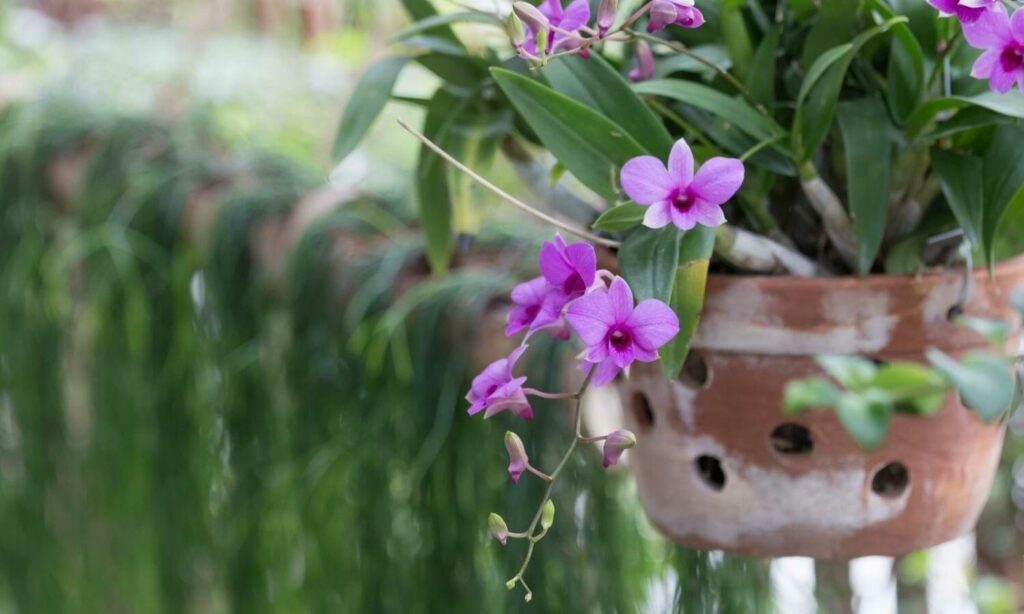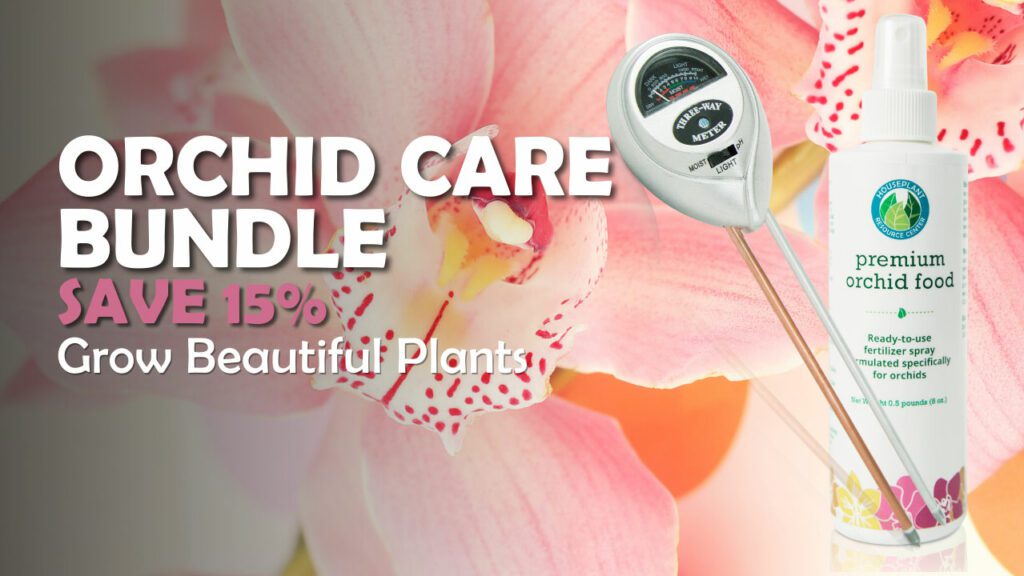Learn how to create perfect drainage for your orchid in 3 simple steps.
If you’re interested in adding an orchid to your home garden, you’ll want to master a few key aspects of orchid care to make sure your plant is happy, healthy, and ready to boast its beautiful blooms when bloom season rolls around each year.
One of the most important care routines you can master is ensuring your orchid gets proper drainage. Without a good drainage system in place, your plant may not last long since many orchids have unique roots that require sunlight and air to thrive.
Let’s dive into the 3 simple steps to create the perfect orchid drainage for your plant so its leaves stay lush and green and its blooms stay rich and colorful all bloom-season long.
Orchid Drainage Step #1: Choose the Right Pot Material
Pot material is something novice growers don’t consider since pots come in all shapes and sizes and are mostly known for their aesthetic features rather than functional aspects. But the material of your orchid’s pot can have much to do with how well its soil is able to drain.
Let’s take a look at the unique aspects of each pot material so you can choose the one that best suits your orchid and your garden.
Glass orchid pots
One of the key features of glass orchid pots is their transparency. Glass pots make it easy for your plant’s root system to absorb sunlight, and they make it easy to monitor your orchid’s root system. If your orchid’s roots aren’t doing well, you’ll be able to diagnose the problem right away, which can make all the difference.
Be sure you buy a glass pot with pre-drilled ventilation and drainage holes since it’ll be difficult to add those features yourself without special equipment and tools.
Wooden basket orchid pots
Wooden baskets are typically hung from a hook or a high beam which allows them to use gravity to encourage water runoff. This makes hanging baskets perhaps the number-one well-draining orchid pot on the market. These orchid pots are also typically environmentally friendly and reusable, a definite plus for many growers.
Plastic orchid pots
Plastic orchid pots are sunlight- and ventilation-friendly, two aspects that encourage good drainage. Additionally, plastic pots don’t absorb crucial mineral salts and fertilizer nutrients from the potting media. Instead, the potting media stays rich with minerals so your orchid receives plenty of nutrients from its potting mix. Plastic pots are also easy to use, won’t break your budget, and they allow for modifications like adding additional drainage and ventilation holes if necessary.
Ceramic orchid pots
Ceramic pots are stylish, durable, reusable, and often come in unique finishes. However, they aren’t always fitted for orchid success since they prevent sunlight from reaching the roots and don’t lend themselves to easy modification. Be sure your ceramic pot comes with plenty of pre-drilled holes, otherwise, your orchid’s roots will be highly susceptible to root rot.
Clay pots
Clay pots are extremely porous, which means they’ll soak up some water themselves. This feature encourages the potting mix to dry quickly and goes a long way to prevent overwatering. When choosing a clay pot, be sure the pot comes with a large drainage hole to prevent root damage and water retention.
Professional Tip: There is no right or wrong pot material. Choose the material that best suits you and your orchid, but remember that the best orchid pots will have features that allow for good drainage, ventilation, root space, and sunlight.
Orchid Drainage Step #2: Choose the Right-Sized Pot
As long as the pot holds the orchid, many beginner orchid growers may not consider the size of their orchid’s pot. The size of your orchid’s pot, however, can greatly affect your plant’s ability to survive.
Generally, smaller orchids do well in smaller pots while larger orchids often thrive in larger pots. If your small orchid is in a big pot with lots of potting soil, its roots may suffocate. On the other hand, if your large orchid is in a pot that allows too little potting mix, it may become root-bound and nutrient-deficient, which can prevent bloom.
When choosing a pot for your orchid, be sure that smaller pots (around 3-4 inches in diameter) have around 5 drainage holes and larger pots (around 6-8 inches in diameter) have around 10 drainage holes.
Professional Tip: When you repot your orchid every year or two, choose a pot that is slightly bigger than the last. To make the process easy, take some quick measurements of your orchid’s pot before you shop around for a new one.
Orchid Drainage Step #3: Use the Right Potting Media
Typically, tropical orchids have epiphytic root systems, meaning they don’t grow in regular soil. In the wild, many tropical and subtropical orchid species grow clinging to the branches of trees.
If you use regular indoor plant soil or a traditional potting mix for epiphytic orchids, you’ll suffocate their roots and accidentally kill your orchid. For best results, buy an orchid potting mix for tropical orchids, and be sure to refresh your potting mix when you notice a significant breakdown in the chunky organic material.
Terrestrial orchids, though, do grow in regular soil. These orchid species are usually native to the Americas. For best results, purchase a terrestrial orchid growing mix for your terrestrial orchid plants.
Professional Tip: If you’re up for a DIY project, or if you’re on a budget, you can make your own orchid growing mix at home by combining three parts fir bark, one part perlite, and one part sphagnum moss.
Keep Your Orchid’s Roots Healthy With Houseplant Resource Center’s Premium Orchid Food
Keeping your orchid happy and healthy can seem like a tall order. But by using a gentle orchid fertilizer, you’ll ensure your orchid’s roots, leaves, and blooms are properly nourished all year long.
Houseplant Resource Center’s Premium Orchid Food lets you grow beautiful, exotic orchids with ease. This product checks all the boxes. It’s gentle, easy to apply, and it won’t burn your orchid’s roots.
Here are a few of the features that make it the perfect addition to your orchid care routine after you’ve set your plant up for success by providing it with proper drainage:
- It’s easy to apply: The pre-mixed spray acts as a root stimulator for plants to improve their ability to use nutrients. This is especially important for young plants.
- It’s specially formulated: Sea kelp extract and humic acids address the unique needs of your orchid. With regular use, you’ll see healthy and vibrant orchids that grow larger year after year.
- It’s natural and gentle: The standard orchid fertilizer ratio is diluted, so it’s safe to use at every watering without burning your orchid’s roots.
- It works with many orchid varieties: Premium Orchid Food is compatible with many indoor varieties, including phalaenopsis, epidendrum, Miltonia, cattleya, vanda, cymbidium, and oncidium.
For best results, simply use Premium Orchid Food every time you water. Then sit back and watch your orchid’s blooms explode.



